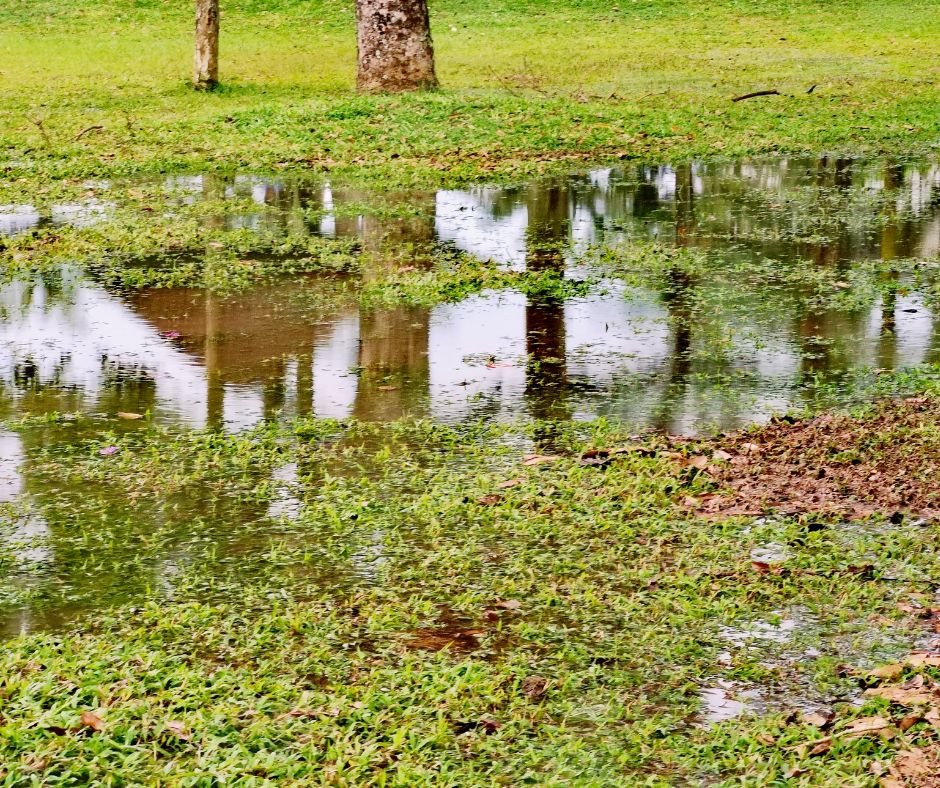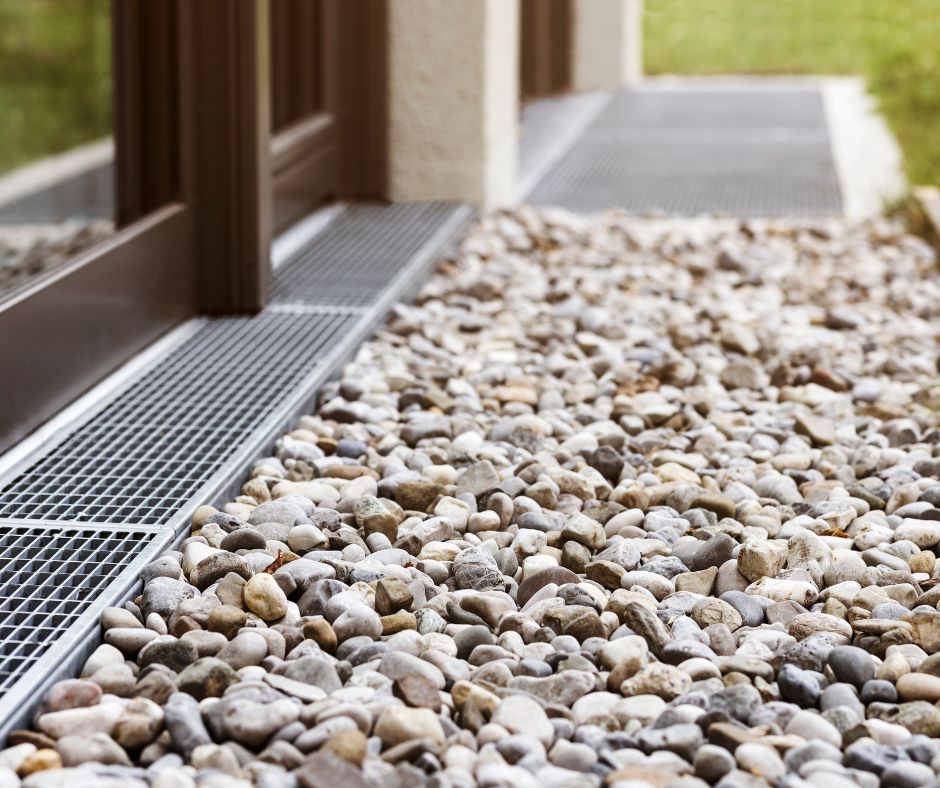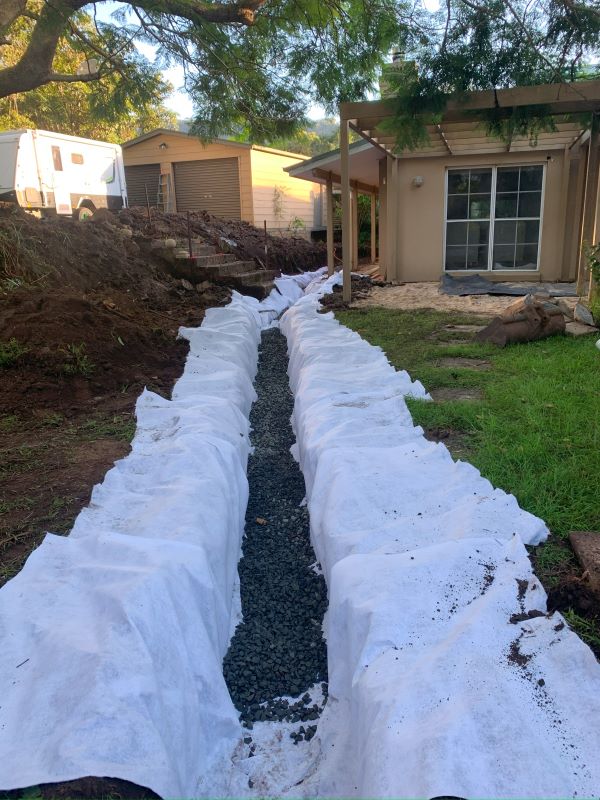Comprehensive Examination of the Primary Causes Behind Blocked Stormwater Drains
Blocked stormwater drains can result from a multitude of natural and structural factors, such as the accumulation of leaf debris, infiltration from tree roots, and incidents of pipe collapse. Common signs indicating a blockage include slow drainage of water, noticeable pooling around drainage grates, unusual gurgling sounds emanating from the pipes, or even water backing up into your home after heavy rainfall. To tackle these issues effectively, begin by clearing any visible surface debris, followed by a meticulous examination for possible pipe blockages. If these problems persist, it may be prudent to consider the installation of a French drain system, which can efficiently redirect excess water away from your home’s foundation, thereby averting potential damage.

During heavy rainfall events, your stormwater management system is designed to effectively channel water away from your property to prevent flooding. However, when drains become obstructed, water can rapidly accumulate, leading to flooding in gardens, potential damage to your home’s foundations, and even water infiltration into basements or subfloors. Homeowners residing in Wollongong, especially those living on sloped terrain or in areas with clay-heavy soil, may find themselves grappling with persistent issues related to blocked stormwater drains, which require regular maintenance to avoid expensive repairs and safeguard their properties.
Whether your drainage grate is overflowing or your backyard turns into a swamp following each rainstorm, this extensive guide aims to explore the myriad causes of these blockages. It will provide detailed insights into effective clearing methods and offer guidance on when it may be necessary to implement a more advanced solution, such as a French drain system. By understanding these factors, you can take proactive measures to maintain the integrity of your property’s drainage systems.
Identifying the Common Causes of Blocked Stormwater Drains in Wollongong
1. The Negative Impact of Leaf Litter and Garden Debris Accumulation
During adverse weather conditions, organic materials such as leaves, bark, and mulch can wash into surface grates, forming natural barriers that obstruct the flow of water. Without consistent maintenance and cleaning, these blockages can build up rapidly, particularly in densely vegetated suburbs like Keiraville, Figtree, or Mt Keira. Homeowners must remain vigilant and regularly clear these areas to prevent flooding and possible water damage, thereby ensuring that stormwater systems operate effectively and efficiently.
2. The Invasive Nature of Tree Roots on Drainage Systems
Established trees possess extensive root systems that often seek out moisture sources, which can lead these roots to infiltrate and fracture PVC or clay pipes. Over time, this infiltration can significantly restrict the flow of water and trap additional debris within the pipes, resulting in considerable blockages. Such intrusions necessitate prompt action, as they can lead to costly repairs and further damage to your stormwater infrastructure, affecting overall drainage efficiency.
3. Understanding Pipe Collapse and Sediment Build-Up in Older Systems
Older stormwater systems, especially those in homes constructed before the year 2000, are susceptible to problems such as collapsed pipes, incorrect fall angles, or excessive sediment accumulation. These flaws often remain unnoticed until a substantial rainfall event occurs, resulting in sudden failures that can cause extensive property damage. Regular inspections and maintenance are crucial for identifying and rectifying these vulnerabilities before they escalate into major issues, ensuring the longevity of your drainage system.
4. The Consequences of Improper Surface Grading on Water Drainage
If your yard is not graded correctly to slope away from your home, water will naturally collect near walls and grates, thereby increasing the risk of flooding. Even a well-functioning stormwater pipe may struggle to manage excess water if the surface does not facilitate effective drainage. Conducting regular assessments of your property’s grading can be beneficial in mitigating these issues, ensuring that water flows away from critical areas and reducing the risk of damage to your property.

Spotting the Warning Signs of a Blocked Stormwater Drain
- Surface water pooling around grates or downpipes, indicating drainage issues
- Gurgling or bubbling noises during periods of rainfall, suggesting blockages
- Water overflowing from gutters or drainage pits, leading to potential flooding
- Soggy lawns or spongy soil lingering days after rainfall, indicating ongoing drainage problems
- Basement or garage flooding following storms, signalling serious drainage failures
Critical Steps for Effectively Clearing a Blocked Stormwater Drain
1. Begin by Removing Surface Debris
Initiate your drain clearing process by removing leaves, silt, and other debris from grates, pits, and downpipe guards. In many instances, the blockage is due to material just beneath the surface cover, making this an essential initial step to resolve drainage issues.
2. Flush the Line Using High-Pressure Water
Utilise a high-pressure hose or jetter to effectively dislodge shallow blockages. However, if you observe the system beginning to back up, cease operations immediately, as applying further pressure may exacerbate a collapsed section of the pipe, leading to additional complications and possibly increasing repair costs.
3. Employ a Drain Camera for Thorough Inspection
A licensed plumber can conduct a comprehensive examination of stormwater pipes using a CCTV drain camera. This advanced technology reveals cracks, blockages, or misaligned connections that may be causing drainage problems, allowing for targeted repairs and interventions to restore optimal drainage functionality.
4. Seek Professional Assistance to Address Tree Root Blockages
If tree roots are identified as the source of the blockage, pipe relining may be the most effective long-term solution, as it seals the pipe without necessitating excavation. If you are uncertain about the best course of action, our Wollongong drainage specialists can provide an accurate diagnosis and efficiently repair blocked systems to restore proper drainage.
Determining When to Install a French Drain System
French drains are sophisticated subsurface drainage systems specifically designed to redirect water away from your property. These systems consist of a gravel-filled trench containing a perforated pipe, which is installed at a slight gradient to transport water towards a designated discharge point, ensuring effective drainage and minimising water accumulation around your home.
Ideal Scenarios for Implementing a French Drain:
- Yard flooding occurs even with adequately functioning downpipes, indicating severe drainage issues
- Water pooling near retaining walls or foundations, increasing risks of structural damage
- Driveway runoff that overwhelms existing surface drains, leading to hazardous conditions
- Sloped blocks where water channels downhill, necessitating effective diversion strategies
Our expert team excels in designing and installing custom French drain systems in Wollongong, tailored to accommodate local soil conditions, slope, and rainfall patterns, thereby ensuring optimal performance and longevity of your drainage system.

Comparative Analysis: French Drains Versus Traditional Stormwater Systems
| Feature | Stormwater Drain | French Drain |
|---|---|---|
| Handles Roof Runoff |  |
 |
| Handles Groundwater |  |
 |
| Installed Under Grass |  |
 |
| Requires Surface Inlet |  |
Optional |
| Best For Surface Flow |  |
Partial |
| Best For Subsoil Drainage |  |
 |
Proactive Strategies for Preventing Future Blockages in Stormwater Drains
- Thoroughly clean gutters and grates prior to the commencement of the storm season to prevent debris build-up
- Install leaf guards on downpipes to significantly reduce the entry of debris into drainage systems
- Schedule annual drain jetting or camera inspections to maintain system integrity and functionality
- Avoid planting trees near underground drainage lines to mitigate potential root intrusion
- Ensure lawn gradients slope away from structures to promote effective water drainage and minimise flooding risks
Essential Advice for Wollongong Homeowners on Stormwater Management
Blocked stormwater drains can pose more than just a minor inconvenience; they represent significant risks to your home’s structural integrity. Problems such as flooded footings, damp basements, and persistent water pooling indicate an overloaded or malfunctioning drainage system that requires immediate attention and resolution to avoid extensive damage.
If clearing surface debris fails to resolve the issue, there may be a more serious underlying problem within your pipes or in the overall water management strategy of your property. This is where expert design and drainage solutions become invaluable in safeguarding your home from moisture-related damage and ensuring long-term protection.
Do not delay in addressing these concerns until the next flooding event occurs. If your yard is retaining water, your drainage pits are overflowing, or you suspect tree roots infiltrating your lines, reach out to our team today for a professional inspection.
We will accurately diagnose the issue and, if necessary, design a customised French drain or pipe solution specifically tailored to your site requirements, ensuring optimal drainage efficiency and safeguarding your property.
The Article: Blocked Stormwater Drains: Causes and Solutions in Wollongong first appeared on https://writebuff.com
The Article Stormwater Drain Solutions: Causes in Wollongong Was Found On https://limitsofstrategy.com
The Article Stormwater Drain Solutions in Wollongong: Understanding Causes found first on https://electroquench.com
